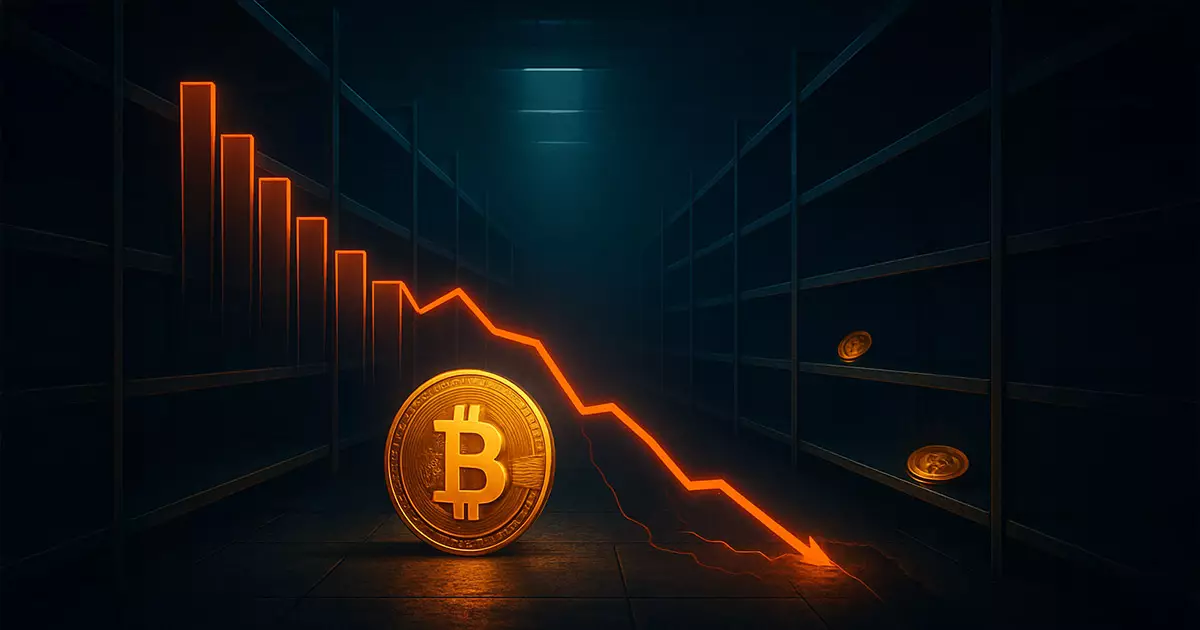In the world of cryptocurrencies, data from CryptoQuant reveals a stark reality: the amount of Bitcoin (BTC) available on centralized exchanges has plummeted to levels not seen since 2019—while this may sound alarming at first, it is profoundly bullish. As of late April 2025, a mere 2.5 million BTC sits on exchanges, which stands as a stark contrast to previous figures. This decline of 500,000 coins from the end of last year suggests an undeniable shift in investor behavior. Many are moving their holdings into self-custodial wallets, a trend embodying confidence in Bitcoin as a long-term investment rather than a fleeting speculative asset.
What’s responsible for this trend? It’s the growing sentiment across the cryptocurrency community that Bitcoin is not just another commodity; it is becoming a cornerstone in modern asset allocation. Understanding this transition is essential for anyone unwillingly caught in the fray of speculation and short-term trading.
Institutional Influence on Supply Dynamics
Institutional investors are no longer sidelining Bitcoin; they are the driving force behind the latest market dynamics, with firms like Fidelity acquiring sizable amounts of BTC—an impressive $253 million recently, to be exact. This aggressive accumulation has formed the backbone of the supply crunch—these players are not just adding coins to their portfolios; they are strategically withdrawing them from exchanges permanently. The allure of Bitcoin as a hedge against economic instability has firmly rooted itself in the institutional psyche.
The numbers tell a clear story: over 425,000 BTC have been withdrawn from exchanges since late 2024 by publicly traded companies, indicating that these firms are growing increasingly confident in Bitcoin as a reliable store of value. This deep-rooted institutional interest transforms not just market sentiment, but also the fundamental mechanics of supply and demand that dictate price movement in cryptocurrencies.
The Bullish Indicators of Decreased Exchange Supply
As the supply of Bitcoin dwindles, it stands to reason that the implications could be seismic. Reduced supply on exchanges naturally diminishes immediate selling pressure, which historically stabilizes prices and can propel them upwards. Analysts like Dennis Porter proclaim this trend as unprecedented, and such bullish enthusiasm shouldn’t be ignored. With fewer coins available for quick transactions, any increased demand from new investors could trigger a supply shock, arguably the precursor to extraordinary price rallies.
On-chain analyst Willy Woo’s bullish sentiment reflects a broader understanding of market fundamentals. With a constrained supply coupled with necessitated demand, the groundwork could easily be laid for a price explosion, especially if the current trend of institutional buy-ins continues unimpeded.
The Evolution Toward Self-Custody
The shift toward self-custody signifies more than just a new strategy for handling Bitcoin; it signals a strategic maturation among investors. Both retail and institutional players realize that their relationship with Bitcoin is transitioning from a gamble to a thoughtful investment decision. Being proactive in safeguarding assets from centralized exchanges exudes a confident level of sophistication that is becoming standard practice.
This evolving mindset is reflected in a survey conducted by Coinbase, which revealed that over three-quarters of institutional investors plan to bolster their digital asset allocations in 2025. Enter Bitcoin’s role as not merely a speculative tool but as an integral component for portfolio diversification, especially amid a backdrop of macroeconomic uncertainty. The concept of viewing Bitcoin as a strategic asset reshapes how it will be leveraged in broader financial strategies.
Market Volatility on the Horizon
While this increasing demand coupled with a dwindling supply paints a rosy picture, it also introduces an element of risk. As we edge closer to a climate where demand could surpass what limited supply remains on exchanges, the potential for increased price volatility looms ominously. Rapid fluctuations could occur, especially if macroeconomic data triggers sudden shifts in investor sentiment.
Thus, the impending weeks could prove pivotal for Bitcoin’s future. Will the current supply crunch catalyze another bullish rally, or will heightened volatility reveal the fragile underpinnings of market psychology? The atmosphere is ripe for speculation, and every investor should remain vigilant as the path forward becomes increasingly complex in an evolving landscape.


Leave a Reply